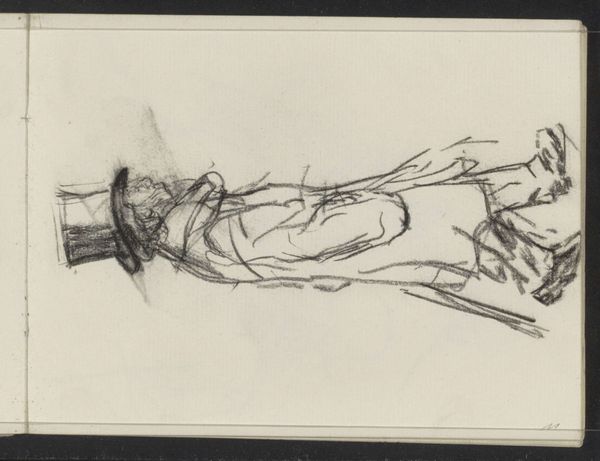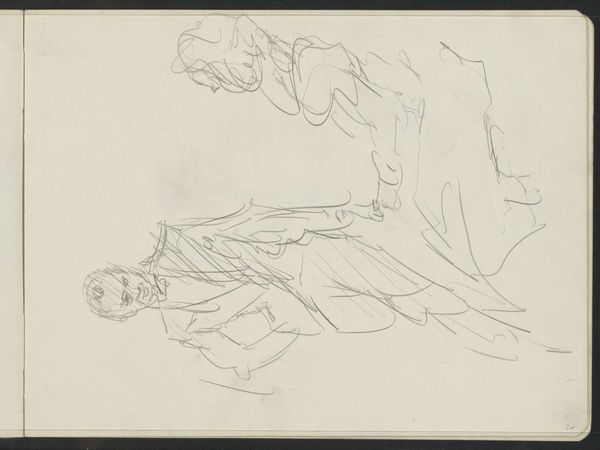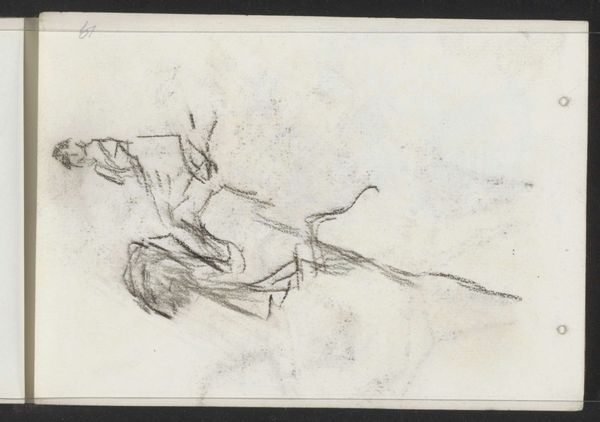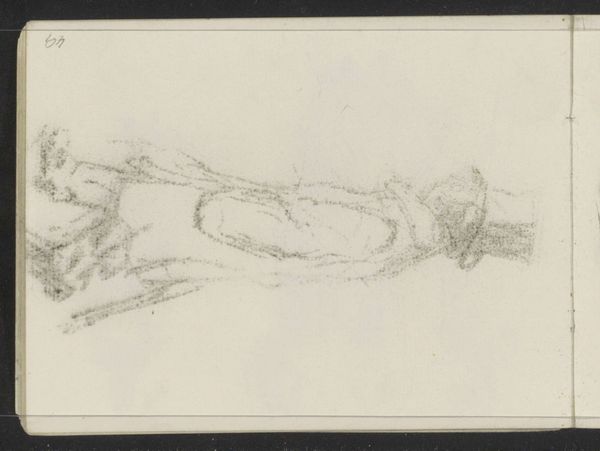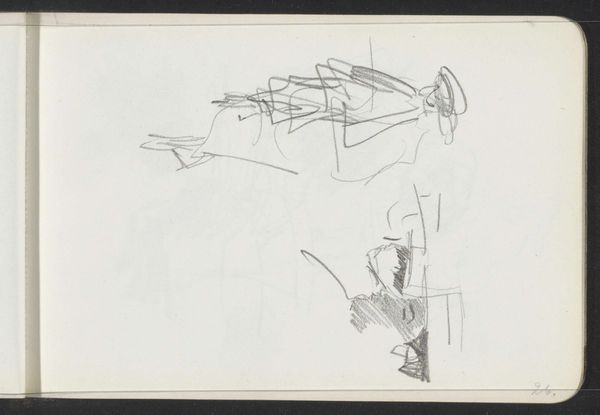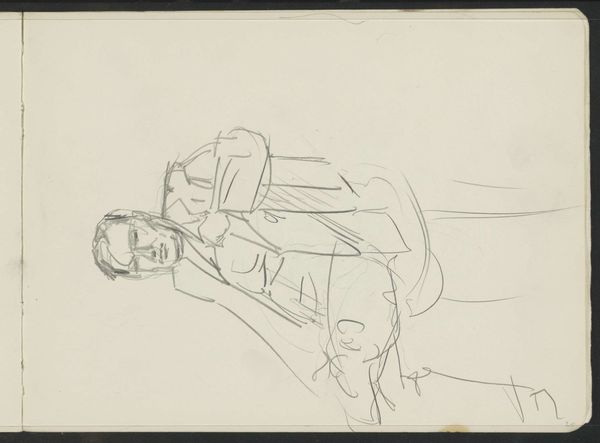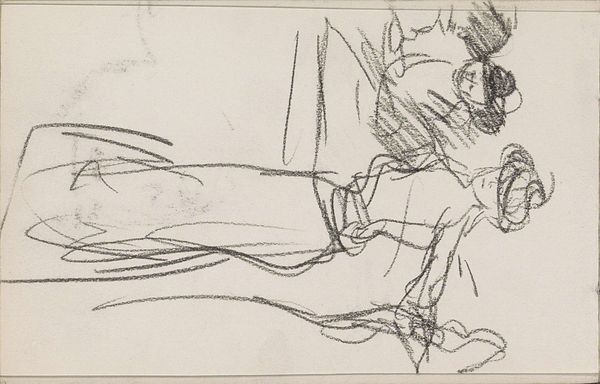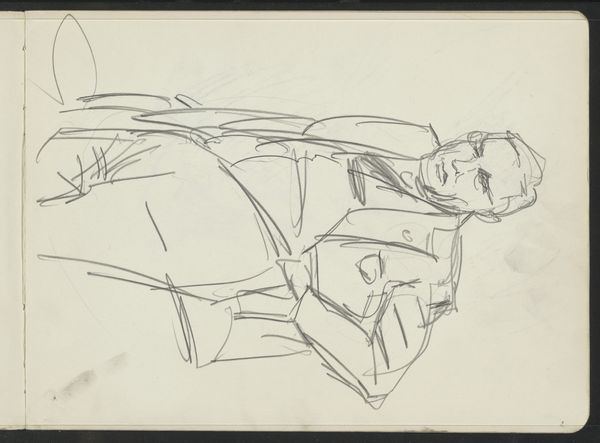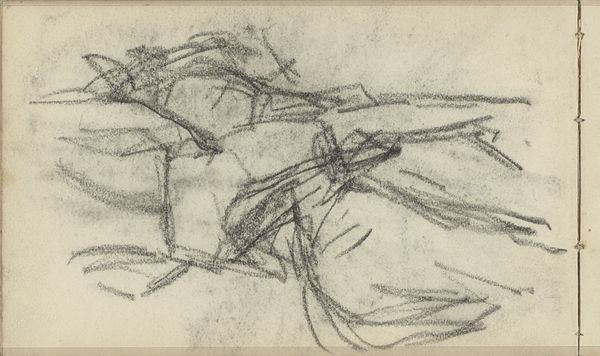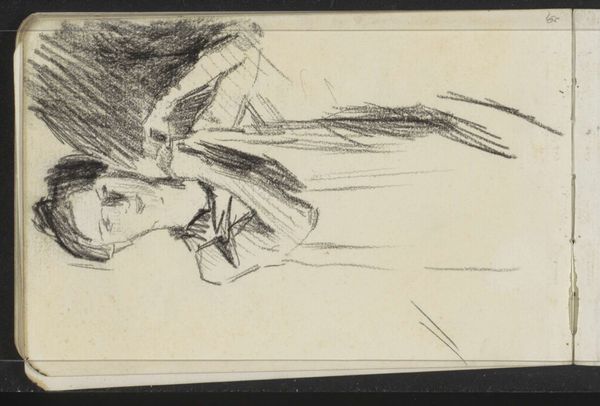
Copyright: Rijks Museum: Open Domain
Curator: Here we have "Man met bolhoed en een gearmd paar, op de rug gezien," or "Man with Bowler Hat and an Arm-in-Arm Couple, Seen from the Back," a drawing attributed to Isaac Israels, dating roughly from 1886 to 1934. It's currently held in the collection of the Rijksmuseum. Editor: Immediately, I'm struck by its looseness. It feels fleeting, captured in the moment, almost as if Israels were sketching on the go. There’s a nervous energy in those lines. Curator: Yes, that's quite characteristic of Israels. He was very much part of the Impressionist movement in the Netherlands, capturing the bustle of urban life. This drawing offers a peek into the artist’s process. It really exemplifies the rapid notation common in sketchbooks from that era. Editor: And it makes you consider the material itself – paper, pencil or ink, quickly deployed. These weren't expensive materials. This was working stuff, the everyday tools of the artist's trade. I wonder about the quality of the paper, how that may have influenced the mark-making. Was it mass-produced? Curator: The economic circumstances and burgeoning consumer culture of the late 19th century certainly played a part in making such materials widely available. But I find it fascinating how a simple sketch like this can tell us something about societal norms as well, specifically around leisure. Observe the man with the bowler hat – a symbol of the rising middle class out for a stroll. Editor: True, but it also feels quite immediate, far from the staged portraits of the aristocracy. It's raw documentation, almost like social reportage. You feel like you’re right there with Israels, observing modern life unfold. The very act of sketching makes these people and places… consumable in a different sense. Curator: And what’s crucial is how artists like Israels challenged established academic traditions. Sketching was often seen as preparatory, secondary to a finished painting. By exhibiting sketches, they elevated the value and showed art in an entirely new public manner. Editor: So, this drawing isn't just an artwork. It's also a record of its own making, pointing us to broader issues of artistic labour and social transformation. What was seen as mere workshop practice all of a sudden becomes worth exhibiting and examining by others. Curator: Precisely. This sketch gives voice to social transformation happening during that period. Editor: Food for thought as we appreciate it.
Comments
No comments
Be the first to comment and join the conversation on the ultimate creative platform.

